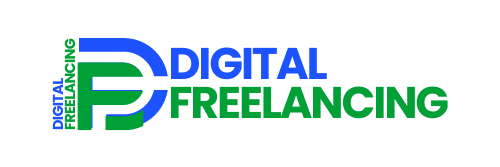Introduction to Freelancing: A Step-by-Step Guide for Beginners
Welcome to Freelancing: Unlocking New Opportunities
Freelancing is a career path that gives you the freedom to work on projects you’re passionate about while setting your own schedule. Whether you’re interested in graphic design, writing, web development, or any other skill, freelancing offers a platform to monetize your talents. This guide will walk you through everything you need to know to get started in freelancing, including choosing a niche, building your profile, and landing your first job.
What is Freelancing?
Freelancing means offering your skills or services on a project basis, often working for multiple clients instead of one employer. Freelancers can work in various fields, including design, marketing, writing, software development, and consulting. The flexibility and autonomy make freelancing an attractive choice, especially for those who prefer working remotely or part-time.
Why Choose Freelancing?
1. Flexible Work Hours
As a freelancer, you set your own hours. This flexibility lets you balance work with personal commitments or even travel while working.
2. Variety of Projects
Freelancers can work on diverse projects, which keeps work engaging and helps in building a versatile skill set.
3. Unlimited Earning Potential
Unlike traditional jobs, where income is often fixed, freelancing allows you to increase your earnings based on the projects you take on and the rates you set.
How to Start Freelancing: Step-by-Step Guide
Step 1: Choose Your Niche
To become a successful freelancer, start by identifying a niche or area where you excel. Your niche could be as broad as “content writing” or as specific as “technical writing for the tech industry.” Choosing the right niche allows you to position yourself as an expert, making it easier to attract clients.
Popular Freelance Niches:
- Graphic Design
- Content Writing
- Web Development
- Digital Marketing
- Video Editing
Step 2: Create a Portfolio
Building a strong portfolio is essential to showcase your skills and attract clients. If you’re new and don’t have past work to showcase, consider creating sample projects to demonstrate your abilities. You can also volunteer or work on personal projects to add to your portfolio.
Portfolio Tips:
- Include only your best work
- Focus on projects related to your niche
- Use visual elements like images or videos where applicable
- Keep it updated as you gain more experience
Step 3: Join Freelancing Platforms
Freelancing platforms like Upwork, Fiverr, and Freelancer.com connect you with clients seeking freelancers in your field. These platforms make it easy to find job opportunities, submit proposals, and secure payments.
Popular Freelancing Platforms:
- Upwork: Offers a wide range of projects across industries.
- Fiverr: Ideal for freelancers offering specific services like graphic design or writing.
- Freelancer: Known for offering competitive projects and hourly work.
Step 4: Set Your Rates
Deciding on rates can be tricky when you’re just starting out. Research what others in your niche charge and consider your experience level. You might start with lower rates to build your reputation and raise them as you gain more clients and experience.
Types of Freelance Rates:
- Hourly Rates: Common for projects requiring a flexible amount of time.
- Project Rates: A set fee for completing a project, often used for specific deliverables.
- Retainer Fees: Monthly fees for ongoing work, ideal for long-term clients.
Step 5: Write Compelling Proposals
When applying for jobs, your proposal can make or break your chances. A well-written proposal demonstrates your understanding of the project and explains why you’re the best fit. Personalize each proposal to the job, addressing the client’s specific needs.
Proposal Writing Tips:
- Start with a friendly introduction
- Highlight your experience and relevant skills
- Address how you plan to solve the client’s problem
- End with a call-to-action, like inviting them to discuss further
Common Questions About Freelancing
What are the benefits of freelancing?
Freelancing offers flexibility, independence, and the potential for unlimited income, making it ideal for those who value work-life balance and variety in their projects.
How do I find freelance jobs?
You can find freelance jobs on platforms like Upwork, Fiverr, or Freelancer.com, as well as through networking and social media.
Is freelancing better than a full-time job?
Freelancing offers benefits like flexible hours and remote work, but it also requires managing your own taxes, client relationships, and finances. Whether it’s better depends on your personal goals and work style.
Getting Started Today
Freelancing can be a rewarding path if approached with the right mindset and preparation. By choosing a niche, building a portfolio, joining freelancing platforms, and honing your proposal skills, you’re setting yourself up for success. Remember, freelancing is a journey, and with persistence and continuous learning, you can turn it into a profitable and fulfilling career.
Ready to dive into freelancing? Explore platforms, start building your profile, and take your first steps toward a flexible career today!


